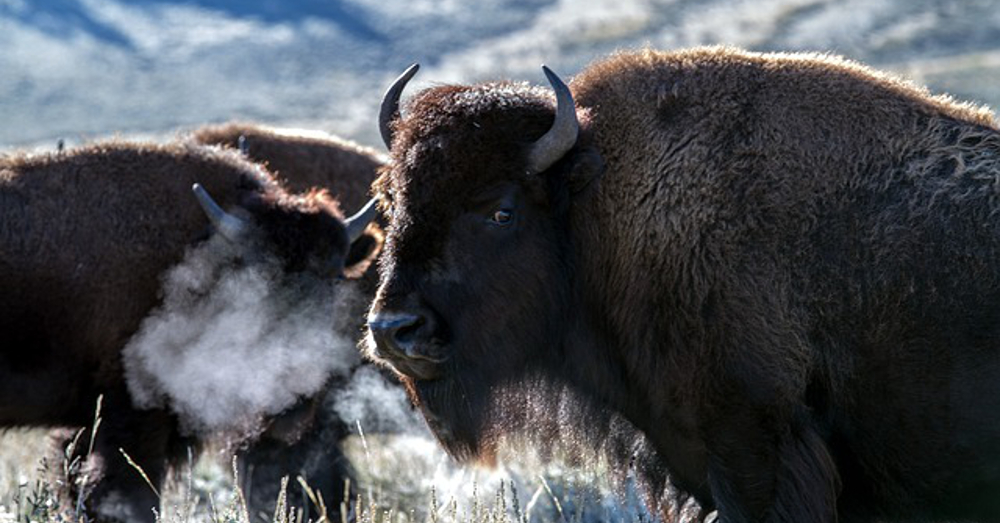
Bison Returned From the Brink Just in Time for Climate Change
The enormous, shaggy animals are making a comeback as a chic, healthy and environmentally friendly source of meat. But to those in the industry, the animals are just the final piece in a larger ecological puzzle. “The grass business is the business we’re in,” said Mark Kossler, vice president of ranch operations at Turner Enterprises Inc. Keep the grass growing, the philosophy goes, and the rest of the ecosystem will follow. In other words: If you grow the grass, your bison will thrive.
July 31, 2017 | Source: Bloomberg | by Deena Shanker
The ranchers bringing back the iconic beast have a healthy, trendy, profitable meat—and, some say, an answer for global warming.
Ted Turner owns more than 100,000 acres of pristine land in southwest Montana, complete with lush grassland and forested hills rolling with Douglas firs. There are populations of wolves, black and grizzly bears, deer, elk and pronghorn antelope ranging freely, some crossing from nearby Yellowstone Park. But the real stars of the Flying D Ranch are his thousands of bison, the American beast once hunted to the edge of extinction.
Turner’s bison don’t need much human intervention to thrive. They breed naturally in the early summer, when the grass is at its most nutritious, and they birth their calves in the fields. The bison can withstand temperature fluctuations and snowfall. The animals are vaccinated for common diseases, but routine antibiotics and synthetic growth hormones aren’t used. When one of the animals dies—on the Flying D Ranch, about 2 percent to 3 percent of the herd perishes each year—the carcass is simply left for scavengers.
The enormous, shaggy animals are making a comeback as a chic, healthy and environmentally friendly source of meat. But to those in the industry, the animals are just the final piece in a larger ecological puzzle. “The grass business is the business we’re in,” said Mark Kossler, vice president of ranch operations at Turner Enterprises Inc. Keep the grass growing, the philosophy goes, and the rest of the ecosystem will follow. In other words: If you grow the grass, your bison will thrive.
And the bison business is thriving. The meat is healthier than beef, with more protein and less fat than salmon, and it is also more lucrative for ranchers. Nearly 60 percent of bison marketers reported an increase in demand, and 67 percent said they were planning to expand their businesses, according to a survey in May by the National Bison Association, an industry group.
Perhaps what makes this growth most surprising is that it coincides with challenging prices for bison meat. A pound of ground beef retails for $4.99 per pound at the moment, according to USDA data. Ground bison currently sells for more than twice that price, at $10.99 per pound. The past three years have seen a 25 percent growth in sales in the retail and food service sectors, according to the trade group, bringing in about $350 million in 2016.
